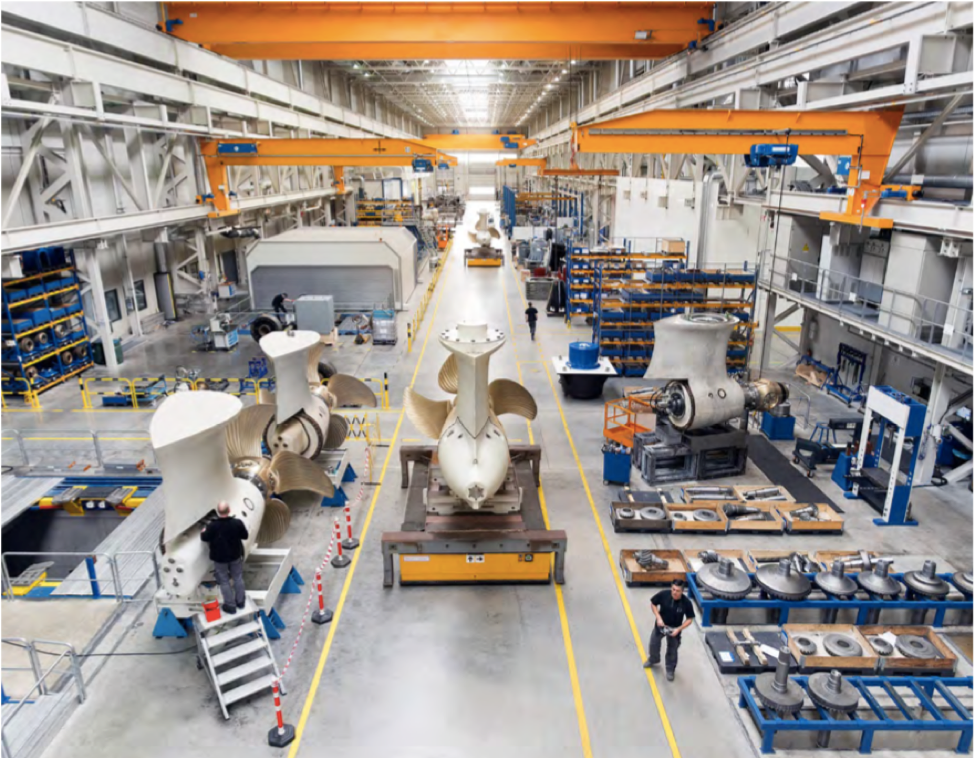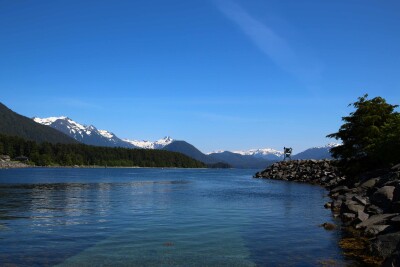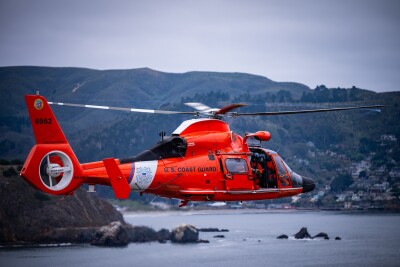Azimuth thrusters are a different stroke for new boats, but offer remarkable fuel efficiency and maneuverability
The Washington-based seafood company Alaskan Leader Seafoods launched the 184-foot longliner Northern Leader in 2013, winning innovations awards for designer, Jensen Maritime. The Northern Leader was the first diesel-electric fishing vessel launched, using four Caterpillar C32s, two C18s and a C9 to power two Schottel rudder propellers type SRP1012FP at 1,000 kW each.
“They saved $500,000 in fuel, the first year. So their payback for going diesel electric was 4 to 5 years,” says Jonathan Parrott, senior naval architect at Jensen.
Three years later, in 2016, another Northwest fishing company, Blue North, launched the 191-foot longliner Blue North. Designed by Norwegian naval architects and engineers, Skipteknisk, the Blue North is also powered by Cat gensets driving electric motors and Schottel Z-drive rudder propellers. The company reported impressive fuel savings, around 30 percent. Surprisingly few vessels — newbuilds or major conversions — have picked up on the technology since then.
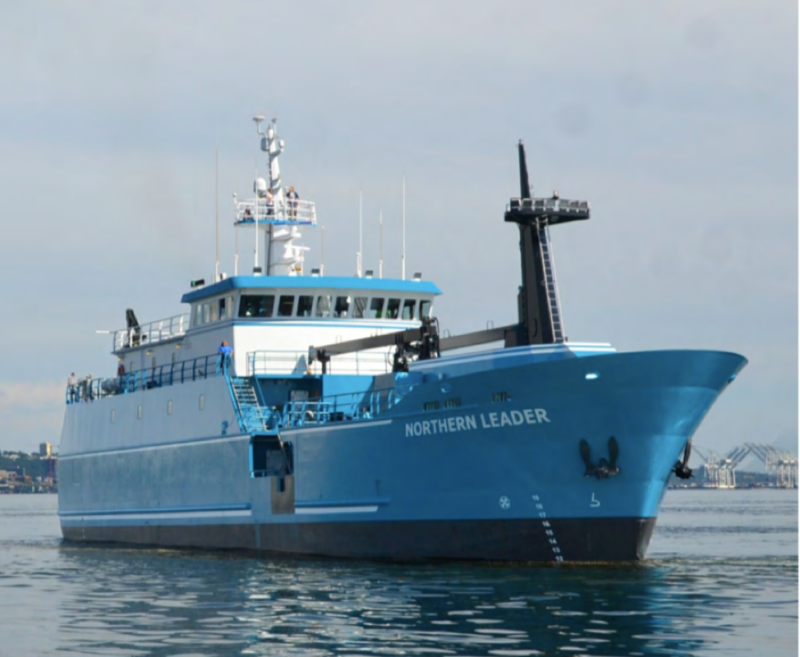
“There are definitely applications for the Z-drive and L-drive on longline vessels, even factory trawlers,” says Schottel’s West Coast Account Manager Ingi Huswick. “There are a lot of advantages. When you get to these larger vessels, one of the more complex things can be the long, complex shaft line that’s a maintenance headache, and it’s also going through your tankage and taking up space. With the Z-drive or L-drive, you have options for installation where you don’t have to build around the shaft line.”
Huswick explains that both Z-drive and L-drive are both azimuth thrusters — able to rotate 360 degrees — the Z-drive requires two gearboxes, one up at the motor and one down in the propeller, while the L-drive the motor is mounted on top of the propeller and eliminates the need for the upper gear box.
“Our equipment maximizes efficiency,” says Huswick. “Eliminating the rudders, for example. Even when the rudder is turned a little, you start losing propulsion because you’re pushing against it. You can lose up to 30 percent efficiency when it’s turned hard.”
The system also gains efficiency in the way it manages power.
“There’s also a lot of redundancy in the system,” Huswick says. “With all those generator sets, you can run both drives with one or two, and the failure rate on an electric motor is much lower than on your typical diesel engine.”
According to Huswick, the system utilizes a load share module to shift loads between engines, enabling each engine to run as maximum efficiency.
“I may shut down some engines, or shift power where it’s needed,” he says.
Maintenance on the rudder propellers used on the Northern Leader is vital. Failure of the seals would wreak havoc on the units.
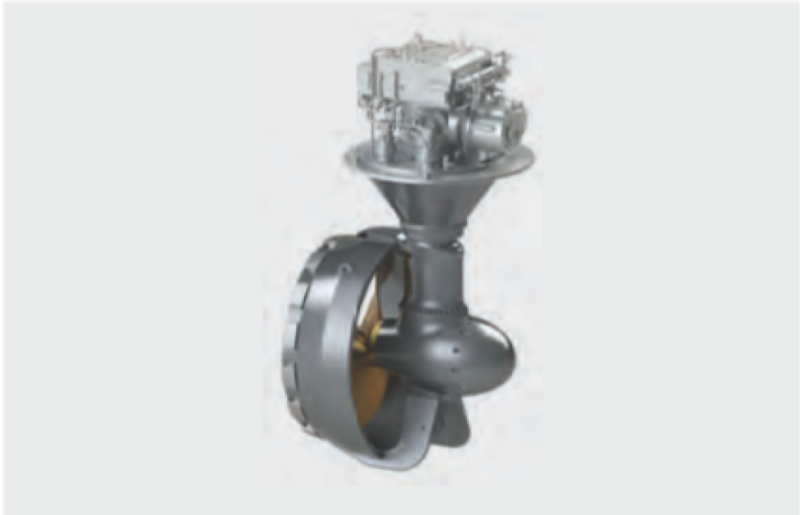
“We did our five-year ABS overall on it after six years of service,” says Huswick. “We replaced all the seals and bearings. It only took a day or two, but those technicians don’t come cheap, and it can be an expensive process.”
In spite of all the check marks in the plus column, Z-drives and L-drive remain rare in commercial fishing fleets. “I think fishermen would rather stick with what they know, especially if they’re going to be out in the Bering Sea. We’re also not building a lot of new boats, and so we’re not seeing people move to the Z-drive.”
Keith Singleton, president of the value-added division of Alaskan Leader Seafoods, reports that the captain of the Northern Leader appreciates the maneuverability the Z-drive propellers give him.
“I know they like it mainly because they can stay on the gear when they’re hauling,” says Singleton. When asked if Alaskan Leader would use Z-drives on any future boats the company might build, Singleton is unequivocal. “Absolutely!” he says.





